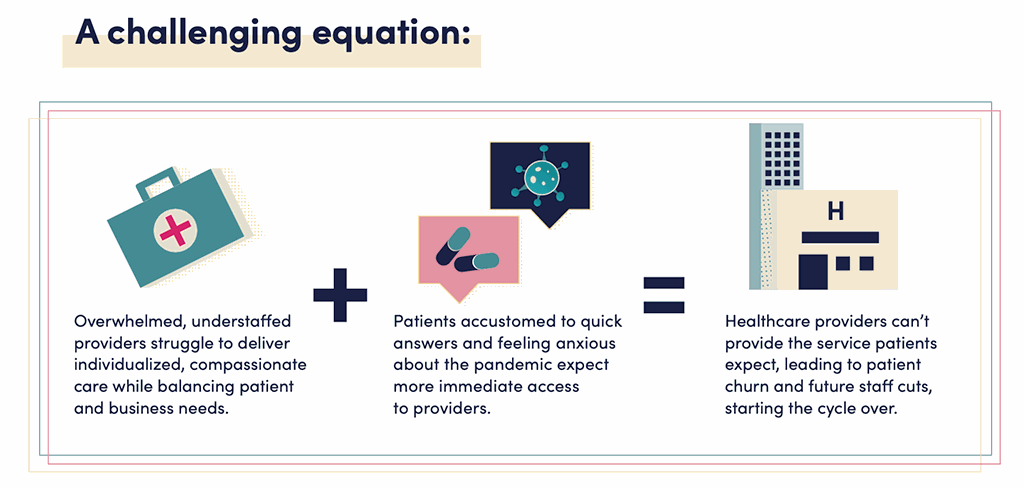
Concerned about burnout? You’re not alone. Healthcare is facing a staffing crisis.
Fact after figure points to this troubling trend:
- 64% of unemployed healthcare professionals lost their jobs due to COVID-19’s impact on their organizations.
- 52% of clinicians have reported increased anxiety, burnout, or mental health issues during the pandemic.
- The healthcare industry needs 5.9 million more nurses to meet global demand—and job growth is “barely keeping pace with population growth.”
At the same time, patient expectations have intensified:
- 51.3% of consumers say convenience is the most critical factor in their choice of providers.
- 84% say being treated like an individual, not a number, is very important.
- 73% expect companies to understand their needs and expectations.
It adds up to a challenging equation. Overwhelmed, understaffed providers struggle to deliver individualized, compassionate care while balancing patients and business needs. Meanwhile, patients accustomed to quick answers expect more immediate access, but providers can’t deliver the service the expect—leading to patient churn and future staff cuts, starting the cycle over.
How can healthcare providers take care of their own needs while ensuring patients experience the quality of service they expect? Find out in Ruby’s infographic, Telehealth 2.0: beating burnout and delivering on patient expectations.




